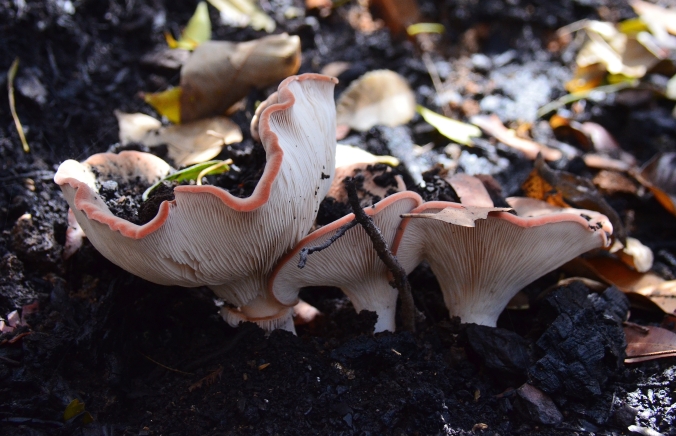
Maybe Neolentinus dactyloides
The Australian bush has a long relationship with fire so it no surprise that we have a number of fungi that fruit after fire. I have been thinking about doing this post for a while but the truth is I’m still a bit raw about the 2019/20 fire season. In my area it went from August 2019 until it rained in February. Months of watching some of my favorite places burn and seeing my friends and family affected was not easy. Visiting some of the fires really gave me a new perspective and seeing the aftermath as the bush recovers is really interesting tho it will be years in recovery for some spots. One thing that came from all this is the photos I will share of the post fire fungi I encountered during my time in the fire grounds.
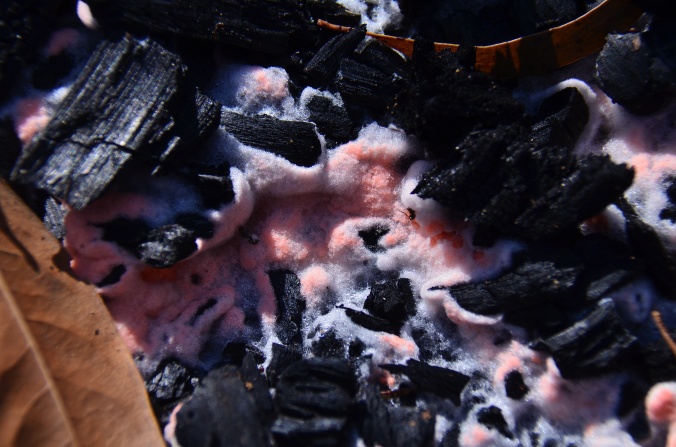
pyronema species probably p. omphalodes
Pyronema is one of the first to fruit after the fire and seems to thrive in hot ash beds. it can blanket the ground and plays an important roll holding the soil together after the fire. How it survives the heat then fruits so soon after is a mystery to me. apparently its a type of cup fungi but i only really saw the fluffy purple or orange stuff like in the above photo.

Laccocephalum species. probably l. tumulosum
I’ve been on the hunt for Laccocephalum mylittae known as native bread or stone maker fungi that has an edible underground sclerotia, a big thing like a tuber that is triggered to fruit after fire. The sclerotia holds all the moisture and nutrients needed for the fungi to fruit so no rain is needed. So far I’ve had no luck finding native bread and instead I have been finding other Laccocephalum species that have a pseudosclerotium. A pseudosclerotium is a ball of mycelium mixed with soil and stones there is a photo of one below. The Laccocephalum species I find can be about the size of a dinner plate, have a light coloured cap and a spongy pores. I’ve dug a few up and found a dense mass of mycelium laced soil a few inches underground where the stem base ends. its not very photogenic but probably has a skin and could be removed intact in the right location. I think they are Laccocephalum tumulosum tho l. hartmannii is a possibility. However hartmannii are generally more red then cream. Still l. mylittae is the goal and the only edible species that I’m aware of but no luck yet.
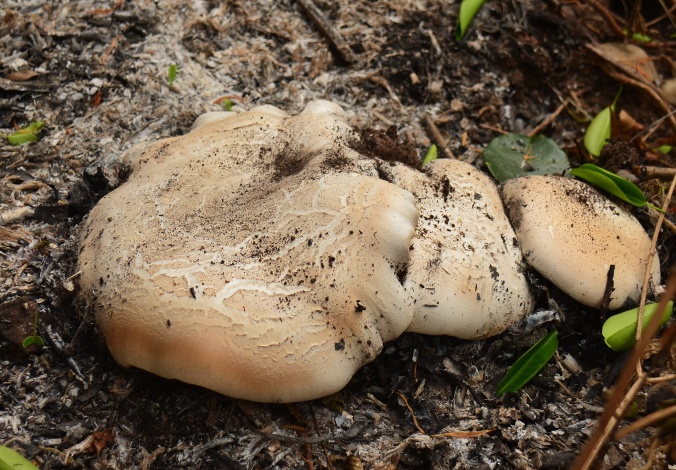
Laccocephalum species. probably l. tumulosum
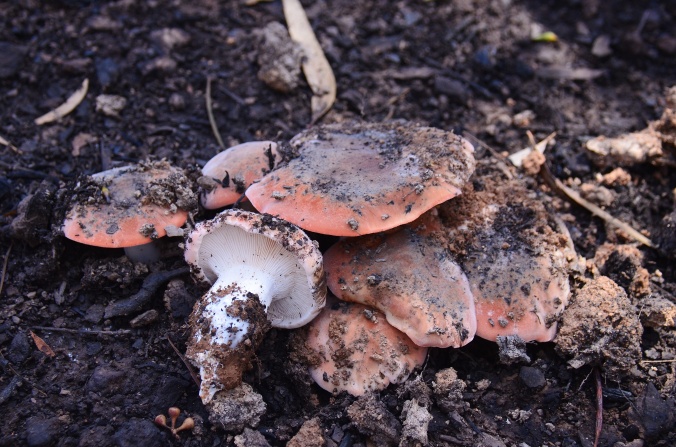
maybe Neolentinus dactyloides
I’m not a hundred percent sure these are Neolentinus dactyloides because there is a wide variation of photos and descriptions of them on the net. I did did not dig them up to inspect the weird finger like sclerotium found in that species. Here are the two conflicting sources. The WA ID seems about right for mine but the Fungimap link is totally different. Who is correct? either way I found these on the edge of a partially burnt patch of rain forest at about 600m. There was a number of these clumps that were almost certainly fruiting from the sclerotia under ground tho it had rained at the time I found them.
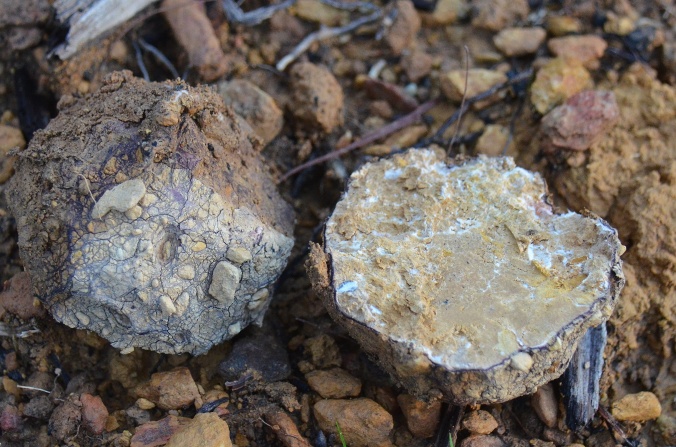
a pseudosclerotium unearthed by a dozer building a fire break
The pseudosclerotium above was a fascinating find, I’m not sure what species it belongs to but it was in the same general area as the Laccocephalum above. It was about the size of a tennis ball and was very solid. I had to cut it open with a knife. You can see the pebbles embedded in the skin and the mass inside seemed like clay and mycelium. With so much country burnt I will be keeping a close eye on the rainfall this winter and spring because there is one last post fire fungi that I would really like to find, that is the aussie fire morels, Morchella eximia and others. I have a number of potential spots ready to check when the time comes. Stay tuned.